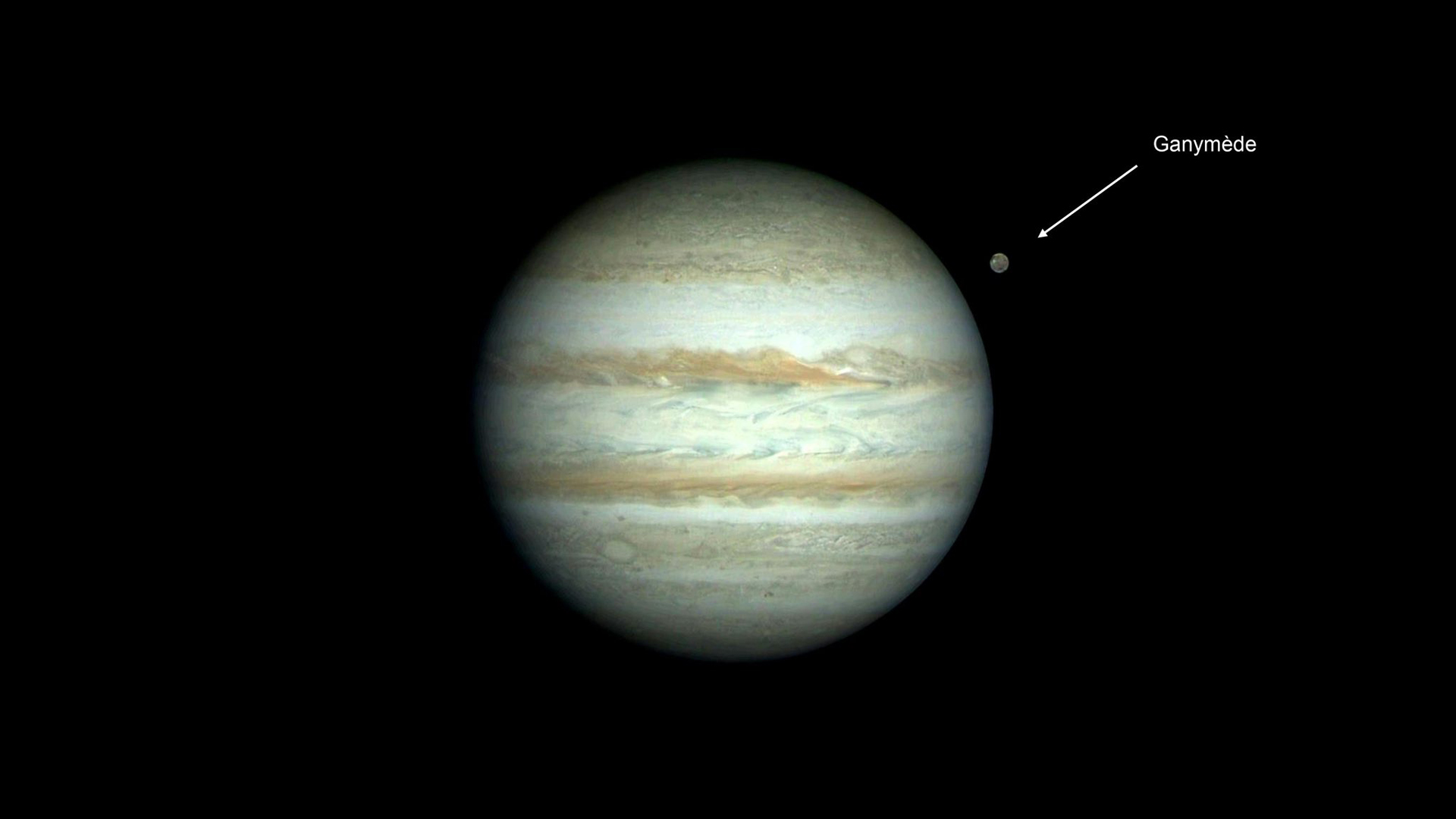A new beautiful image of Jupiter and its largest moon Ganymede demonstrates the imaging power of one of Europe’s flagship satellites. This photo wasn’t taken by an astronomical satellite or an Earth-based telescope, however, but by a European spacecraft built to observe planet Earth in detail.
European aerospace giant Airbus released the image on Twitter on Tuesday (April 11) , together with another photo that captures all four of Jupiter‘s main four moons and a video sequence showing the moons’ motions around the gas giant planet.
“Look how the icy moons are dancing around Jupiter,” Airbus said in the tweet (opens in new tab). “Hard to believe, but these pictures were taken by our #PléiadesNeo satellite.”
Related: ESA’s Jupiter mission JUICE is not ‘strong enough’ to orbit potentially life-harboring Europa. Here’s why
The release of the images came two days before the planned launch of Europe’s Jupiter Icy Moon Explorer (JUICE), a flagship scientific mission that will study Jupiter and its moons up close. Airbus, which built and operates the Pleiades Neo satellite that took these images, is also the main contractor behind the JUICE mission.

Pleiades Neo are Europe’s most advanced Earth-observing satellites, capable of providing images of Earth with a 4-inch (30-centimeter) resolution. Airbus originally planned to operate a constellation of four of these spacecraft, but only two are in orbit so far. The company lost its second pair of satellites due to a launch failure of Europe’s Vega C rocket in December last year.
The JUICE mission is expected to launch on Thursday (April 13) from Europe’s spaceport in Kourou, French Guiana at 8:15 a.m. EDT (1215 GMT). The spacecraft, which will be the first to orbit a moon other than Earth‘s own (Jupiter’s Ganymede), will take almost eight years to reach its destination.
Follow Tereza Pultarova on Twitter @TerezaPultarova. Follow us on Twitter @Spacedotcom and on Facebook.

